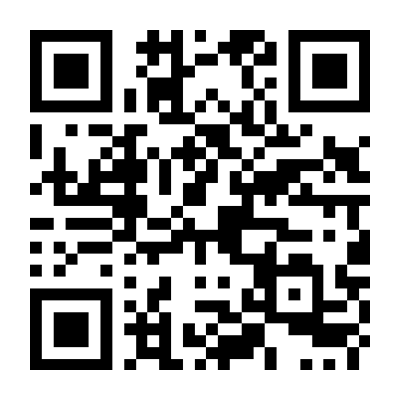多选题
2分
The journal Science is adding an extra round of statistical checks to its peer-review process, edito...
The journal Science is adding an extra round of statistical checks to its peer-review process, editor-in-chief Marcia McNutt announced today. The policy follows similar efforts from other journals, after widespread concern that basic mistakes in data analysis are contributing to the irreproducibility of many published research findings.
“Readers must have confidence in the conclusions published in our journal,” writes McNutt in an editorial. Working with the American Statistical Association, the journal has appointed seven experts to a statistics board of reviewing editors (SBoRE). Manuscript will be flagged up for additional scrutiny by the journal’s internal editors, or by its existing Board of Reviewing Editors or by outside peer reviewers. The SBoRE panel will then find external statisticians to review these manuscripts.
Asked whether any particular papers had impelled the change, Mc Nutt said: “The creation of the ‘statistics board’ was motivated by concerns broadly with the application of statistics and data analysis in scientific research and is part of Science’s overall drive to increase reproducibility in the research we publish.”
Giovanni Parmigiani, a biostatistician at the Harvard School of Public Health, a member of the SBoRE group, says he expects the board to “play primarily an advisory role”. He agreed to join because he “found the foresight behind the establishment of the SBoRE to be novel, unique and likely to have a lasting impact. This impact will not only be through the publications in Science itself, but hopefully through a larger group of publishing places that may want to model their approach after Science”.
John Ioannidis, a physician who studies research methodology, says that the policy is “a most welcome step forward” and “long overdue”. “Most journals are weak in statistical review, and this damages the quality of what they publish. I think that, for the majority of scientific papers nowadays, statistical review is more essential than expert review,” he says. But he noted that biomedical journals such as Annals of Internal Medicine, the Journal of the American Medical Association and The Lancet pay strong attention to statistical review.
Professional scientists are expected to know how to analyze data, but statistical errors are alarmingly common in published research, according to David Vaux, a cell biologist. Researchers should improve their standards, he wrote in 2012, but journals should also take a tougher line, “engaging reviewers who are statistically literate and editors who can verify the process”. Vaux says that Science’s idea to pass some papers to statisticians “has some merit, but a weakness is that it relies on the board of reviewing editors to identify ‘the papers that need scrutiny’ in the first place”.
The phrase “flagged up” (Para.2) is the closest in meaning to ______.
“Readers must have confidence in the conclusions published in our journal,” writes McNutt in an editorial. Working with the American Statistical Association, the journal has appointed seven experts to a statistics board of reviewing editors (SBoRE). Manuscript will be flagged up for additional scrutiny by the journal’s internal editors, or by its existing Board of Reviewing Editors or by outside peer reviewers. The SBoRE panel will then find external statisticians to review these manuscripts.
Asked whether any particular papers had impelled the change, Mc Nutt said: “The creation of the ‘statistics board’ was motivated by concerns broadly with the application of statistics and data analysis in scientific research and is part of Science’s overall drive to increase reproducibility in the research we publish.”
Giovanni Parmigiani, a biostatistician at the Harvard School of Public Health, a member of the SBoRE group, says he expects the board to “play primarily an advisory role”. He agreed to join because he “found the foresight behind the establishment of the SBoRE to be novel, unique and likely to have a lasting impact. This impact will not only be through the publications in Science itself, but hopefully through a larger group of publishing places that may want to model their approach after Science”.
John Ioannidis, a physician who studies research methodology, says that the policy is “a most welcome step forward” and “long overdue”. “Most journals are weak in statistical review, and this damages the quality of what they publish. I think that, for the majority of scientific papers nowadays, statistical review is more essential than expert review,” he says. But he noted that biomedical journals such as Annals of Internal Medicine, the Journal of the American Medical Association and The Lancet pay strong attention to statistical review.
Professional scientists are expected to know how to analyze data, but statistical errors are alarmingly common in published research, according to David Vaux, a cell biologist. Researchers should improve their standards, he wrote in 2012, but journals should also take a tougher line, “engaging reviewers who are statistically literate and editors who can verify the process”. Vaux says that Science’s idea to pass some papers to statisticians “has some merit, but a weakness is that it relies on the board of reviewing editors to identify ‘the papers that need scrutiny’ in the first place”.
The phrase “flagged up” (Para.2) is the closest in meaning to ______.
参考答案: C
参考解析: 词义理解题。原文第二段中flagged up所在句子的句意是手稿将被“flagged up”以供杂志编辑、现有的编辑评审委员会或外部同行审查。该句后一句“find external statisticians to review these manuscripts(寻找数据专家来检查手稿)”是对本句“flagged up”所表示的动作的承接。比较四个选项,只有C项“被标记”符合题意。其它三个选项的意思代入本句,都无法合理引出下句的行为。

 百度扫一扫练题
百度扫一扫练题
 关注千题库公众号
关注千题库公众号








